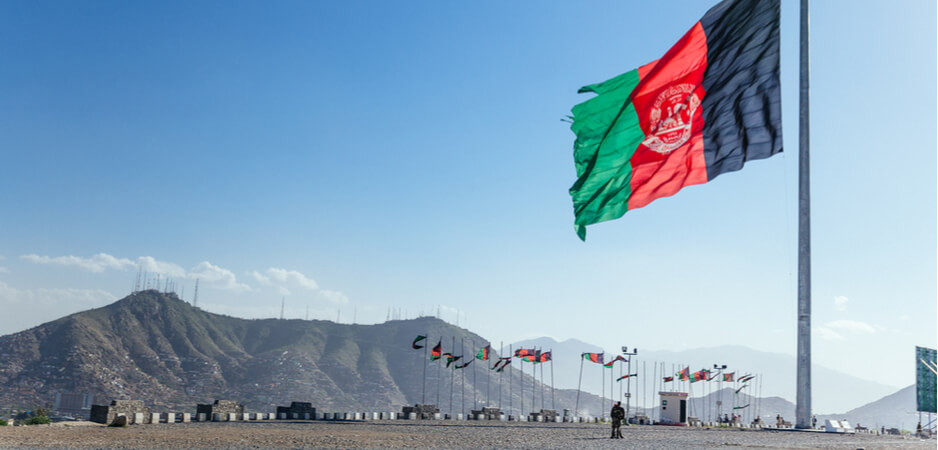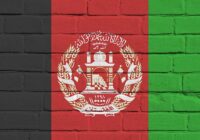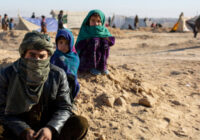The prospect of a peaceful Afghanistan is only realistic if the Taliban breaks ties with other terrorist groups, agrees to a ceasefire and joins the intra-Afghan peace talks.
The Afghan government has been calling for peace talks for many years, yet only in November 2018 did the Taliban agree to meet face-to-face with the US envoys for finding a peaceful solution to nearly 18 years of bloodshed. So far, US officials and the Taliban have had five rounds of peace talks in Qatar and the United Arab Emirates. During the fifth round in March, both parties “agreed in principle” that the US would withdraw its troops from Afghanistan, with the Taliban promising to ensure that the country will not be used by foreign militant groups that pose an international security threat.
The sixth round of talks, which was supposed to take place in Doha on April 20, was cancelled due to “mismanagement,” leading to the intra-Afghan talks between the Kabul government and the Taliban to also be postponed.
Since 2011, the United States has been formally engaged in peace talks with the Taliban. With President Barack Obama confirming the preliminary discussions in June 2011, the United Nations Security Council first split the sanctions list between members of al-Qaeda and the Taliban, and then removed sanctions against 14 key Taliban members. To facilitate the reconciliation process, the US and Afghan governments opened a political office for the Taliban in Qatar’s capital, Doha.
In 2013, the Taliban officially opened its own office in Doha and flew its flag above the sign designating the Islamic Emirate of Afghanistan. However, Afghanistan’s then-president, Hamid Karzai, immediately reacted and insisted on closing the Doha office on the basis that the Taliban was trying to present itself as a government in exile. Following the assassination of the Afghan chief negotiator, Burhanuddin Rabbani, in September 2013, Karzai suspended the peace talks. In reaction, the Taliban increased its violent campaign across the country. The targeting of a Lebanese restaurant in Kabul in February, the attack on the Serena hotel in March and the bombing of a military bus in July made 2014 a deadly year not only for Afghans, but also many foreigners and UN staff.
Part of the Process
In 2017, President Donald Trump outlined an intention to withdraw US troops from Afghanistan, depending on the conditions on the ground rather than according to a fixed timeline. Trump insisted on “open-ended military commitment” in Afghanistan to “prevent the emergence of a vacuum for terrorists.” In retaliation, the Taliban carried out a series of terror attacks in Kabul and other provinces that killed hundreds of people. The Afghan government, with the support of US forces, increased air strikes against the Taliban, targeting its opium labs in an attempt to sever the group’s financial lifeline. Besides, the Trump administration cut off security assistance worth billions of dollars to Pakistan for its “deceit” in harboring Taliban militants.
So far, only the Taliban has benefited from the peace talks. Just recently, the United Nations had removed sanctions on further 14 key Taliban members, including Mullah Abdul Ghani Baradar, Anas Haqqani, Abbas Stanikzai and other members of the group’s political office in Qatar. The release of Taliban members from prison, receiving passports and immunity to travel, as well as having lavish homes with access to Afghan consulate services in Qatar are being enjoyed by the Taliban as part of the peace process.
On the other hand, the Taliban has not made any evident commitment either to the US or the Afghan government. Despite the US peace envoy, Zalmay Khalilzad, having recently announced that the Taliban had agreed in principle to prevent Afghanistan from becoming a “platform for international terrorist groups or individuals,” the group is keeping up its campaign of violence. The Taliban had recently launched its Al-Fath (Victory) offensive to increase its areas of control.
A similar promise that the Taliban will not let Afghanistan be used as a base to threaten other countries was made by the group in 2010, but the country turned into ground zero for 20-plus insurgent groups who support the Taliban financially and militarily and embrace the its campaign of violence and bloodshed. For example, the Haqqani Network joined the Taliban in 1995 and has since carried out many high-profile attacks in Afghanistan, including the January 2008 storming of the Serena hotel, the June 2011 attack on the Intercontinental hotel and the September 2011 attack on the US Embassy in Kabul.
Peace Initiative
The peace initiative rests firmly in the hands of the Afghan government. In February 2018, at the Second Kabul Process for Peace and Security Cooperation, President Ashraf Ghani offered unconditional peace talks to the Taliban and asked the group to renounce violence, accept the rule of law and enter into peace negotiations. President Ghani’s offer to the Taliban also included the release of Taliban prisoners, granting passports and visas to family members and a removal of sanctions imposed on the group’s leaders. Although these offers fulfilled the Taliban’s previous preconditions for peace talks, the group did not respond.
Receiving no response from the Taliban, the Afghan government threatened it with the closure of its political office in Doha. While discussion over the measure continued in Kabul, the Taliban unexpectedly called for direct talks with the US by publishing a 10-page “Letter to the American People” and “peace-loving congressmen” to pressure the Trump administration into a “peace dialogue.”
In June 2018, a ceasefire initiated by the Afghan government for the duration of the Eid al-Fitr holiday increased the momentum for peace talks. A month later, Taliban officials led by Abbas Stanikzai secretly met with a senior US diplomat, Alice Wells, of the Bureau of South and Central Asian Affairs, for a preliminary discussion in Doha to set up a channel between the US officials and the Taliban ahead of future face-to-face talks.
In November 2018, the US envoy held three-days talks with the Taliban officials in Qatar to discuss the withdrawal of the US forces from Afghanistan and pave the way for intra-Afghan talks. Since then, four more rounds of talks were held, with the last meeting lasting 16 days between the US team led by Khalilzad and the Taliban officials led by Mullah Abdul Ghani Baradar.
Two Phases
The Taliban will not enter into intra-Afghan talks until it reaches an agreement with the US. Following the release of an open letter in February of last year, Taliban officials based in Qatar announced that the group will initiate the talks in two phases. In the first phase, which has already begun, the Taliban will be meeting with US diplomats to set up a timetable for the withdrawal of the US troops from Afghanistan. The Taliban believes that only the US has the power to decide and implement a decision to withdraw its forces from Afghanistan.
The Taliban considers Afghanistan an occupied country and has not shown a willingness to talk with the Afghan government without entering into an agreement with the US first. Once the Taliban reaches a preliminary decision with the United States, the group will start the second phase of talks with the Afghan government to discuss other domestic issues, such as how to implement the peace deal, enter a power-sharing agreement and form a new government in Afghanistan.
 A long-lasting peace agreement will have to include all warring parties, society (including ethnic minorities, women and youth) and major regional and international stakeholders. Having learned from the 1988 Geneva Accords, which excluded the mujahedeen groups from direct participation in the peace talks, the Peshawar Accord of 1992, which excluded the northern militias and reserved “a modest share in power for the Shia Mujahidin of Hizb-e Wahdat” in the new government, and the 2001 Bonn Agreement that excluded the Taliban from participation and formation of the post-2001 government, the current peace talks must provide sufficient space for the participation and involvement of all warring parties, the wider Afghan society and major regional and international powers.
A long-lasting peace agreement will have to include all warring parties, society (including ethnic minorities, women and youth) and major regional and international stakeholders. Having learned from the 1988 Geneva Accords, which excluded the mujahedeen groups from direct participation in the peace talks, the Peshawar Accord of 1992, which excluded the northern militias and reserved “a modest share in power for the Shia Mujahidin of Hizb-e Wahdat” in the new government, and the 2001 Bonn Agreement that excluded the Taliban from participation and formation of the post-2001 government, the current peace talks must provide sufficient space for the participation and involvement of all warring parties, the wider Afghan society and major regional and international powers.
On April 29, President Ashraf Ghani opened the four-day Loya Jirga, or grand assembly. Notably missing from it are the country’s chief executive, Abdullah Abdullah, the chairman of the Afghan High Peace Council, Karim Khalili, as well as many other high-ranking officials such as former President Hamid Karzai and former national security adviser Hanif Atmar. The Jirga is the last attempt by the Afghan government to find common ground on how to approach the Taliban and obtain the support of tribal elders to strengthen Kabul’s position during the peace talks. However, the Taliban has already dismissed the Jirga’s outcome, knowing that it is just a consultative assembly with no binding legal authority.
It is clear that the last five rounds of talks have increased the momentum for resolution, but the prospect of a peaceful Afghanistan is only realistic if the Taliban breaks ties with other terrorist groups and sponsors of terrorism, agrees to a ceasefire and joins the intra-Afghan peace talks. As the Taliban and Afghan government forces actively fight for control over more territory in order to gain leverage in the peace talks, all eyes are on the conclusion of the Loya Jirga to establish a peace map for talks between the government in Kabul and the Taliban.
The views expressed in this article are the author’s own and do not necessarily reflect Fair Observer’s editorial policy.
Support Fair Observer
We rely on your support for our independence, diversity and quality.
For more than 10 years, Fair Observer has been free, fair and independent. No billionaire owns us, no advertisers control us. We are a reader-supported nonprofit. Unlike many other publications, we keep our content free for readers regardless of where they live or whether they can afford to pay. We have no paywalls and no ads.
In the post-truth era of fake news, echo chambers and filter bubbles, we publish a plurality of perspectives from around the world. Anyone can publish with us, but everyone goes through a rigorous editorial process. So, you get fact-checked, well-reasoned content instead of noise.
We publish 2,500+ voices from 90+ countries. We also conduct education and training programs
on subjects ranging from digital media and journalism to writing and critical thinking. This
doesn’t come cheap. Servers, editors, trainers and web developers cost
money.
Please consider supporting us on a regular basis as a recurring donor or a
sustaining member.
Will you support FO’s journalism?
We rely on your support for our independence, diversity and quality.






